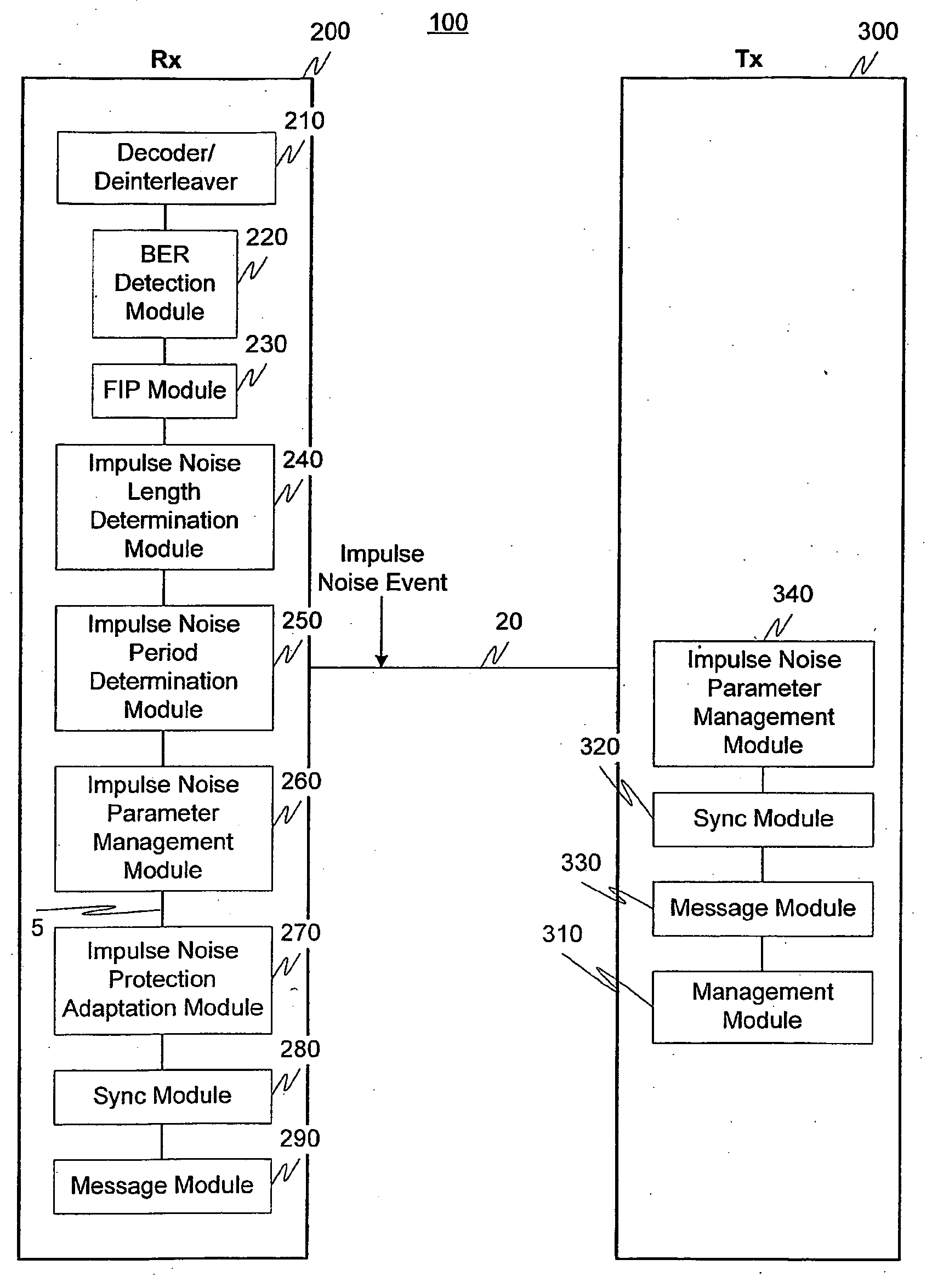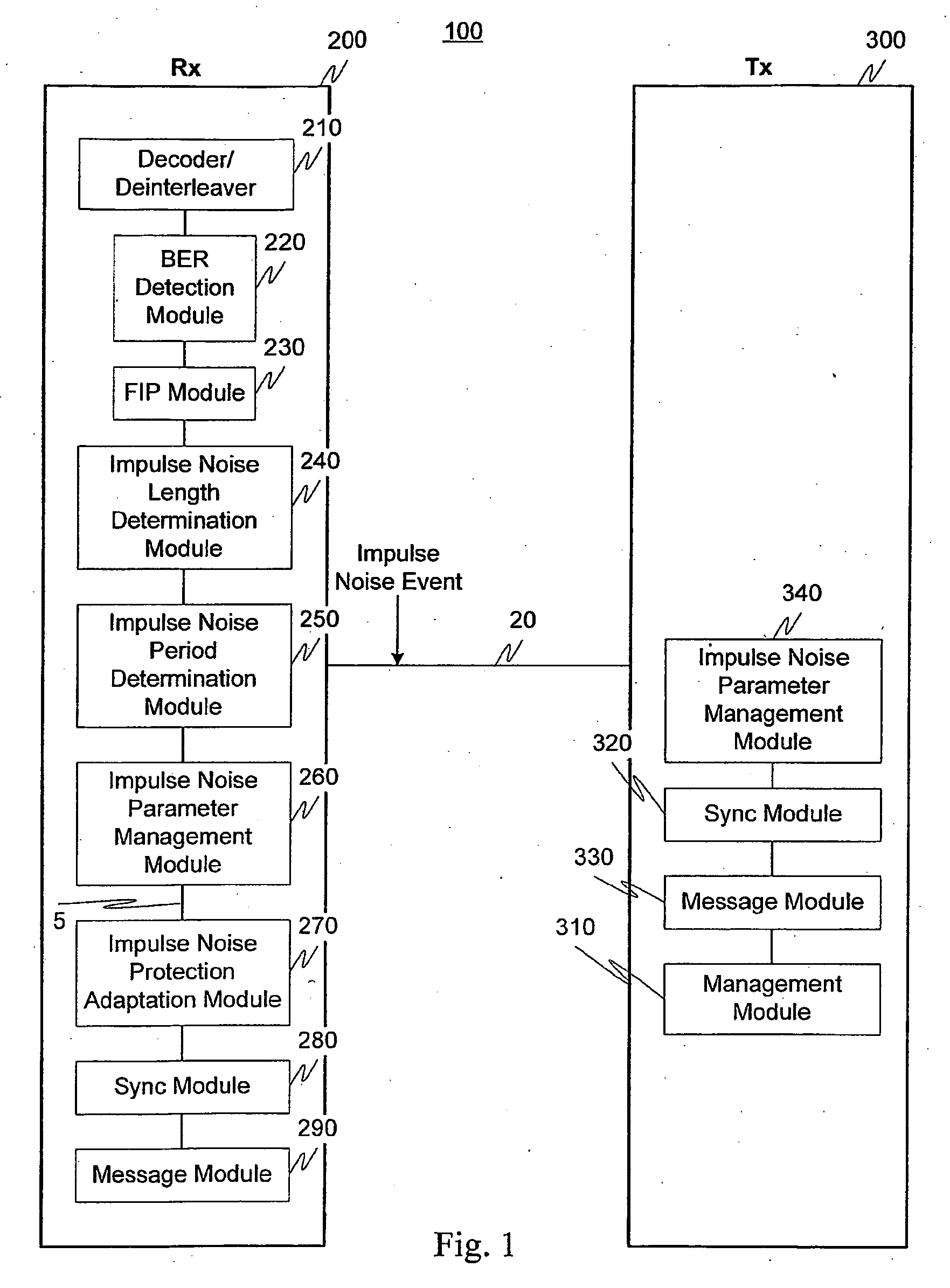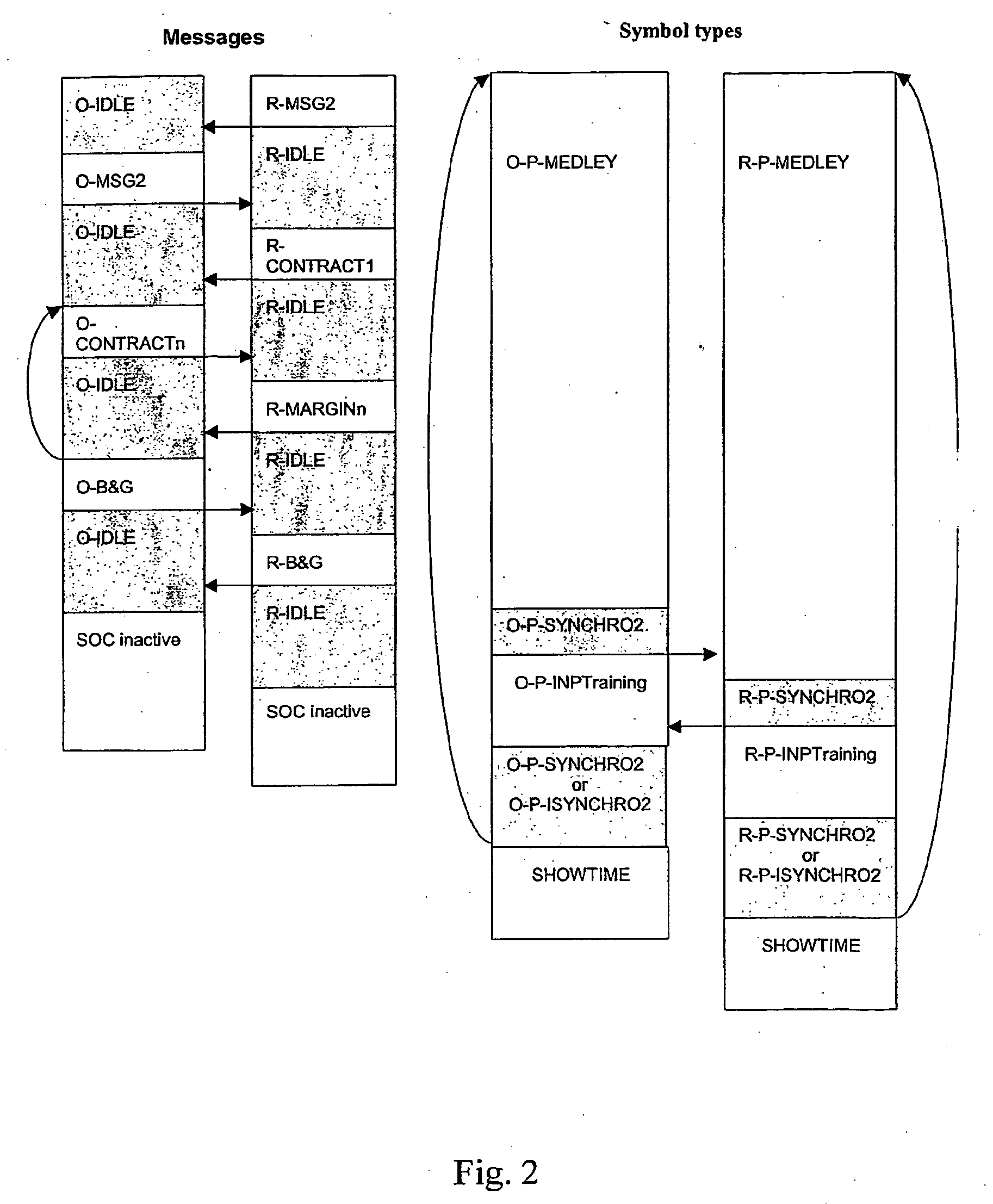Impulse Noise Management
- Summary
- Abstract
- Description
- Claims
- Application Information
AI Technical Summary
Benefits of technology
Problems solved by technology
Method used
Image
Examples
example 1
On-Line INP Adaptation FIP Setting
[0079]This section describes an example of FIP settings for On-Line INP adaptation for DSL. In this example only the number of information bytes in a codeword (K) and the number of parity bytes in a codeword (R) are updated on-line. The Codeword Size (N) and Interleaver Depth (D) are not changed. This means that the latency (and interleaver memory size) and the line rate are not modified on-line. Since N=K+R this places restrictions on the allowed values for K and R.
1st Setting—{Approximate User Data Rate=3.968 Mbps, Line Rate=4.096 Mbps, N=128, K=124, R=4, S=1, D=64, Latency=16 msec, INP=1}
2nd Setting—{Approximate User Data Rate=3.840 Mbps, Line Rate=4.096 Mbps, N=128, K=120, R=8, S=1, D=64, Latency=16 msec, INP=2}
3nd Setting—{Approximate User Data Rate=3.584 Mbps, Line Rate=4.096 Mbps, N=128, K=112, R=16, S=1, D=64, Latency=16 msec, INP=4}
[0080]The On-line INP adaptation process is restricted to only modify the number of information bytes in a cod...
example 2
On-Line INP Adaptation FIP Setting
[0081]This section describes an example of FIP settings for On-Line INP adaptation for DSL. In this example only the Codeword Size (N) and the number of parity bytes in a codeword (R) are updated on line. The number of information bytes in a codeword (K) and Interleaver Depth (D) are not changed and therefore the user data rate does not change. This means that the latency (and interleaver memory size) and the line rate are modified on-line. Since N=K+R this places restrictions on the allowed values for K and R.
1st Setting—{Approximate User Data Rate=3.968 Mbps, Line Rate=4.096 Mbps, N=128, K=124, R=4, S=1, D=64, Latency=16 msec, INP=1}
2nd Setting—{Approximate User Data Rate=3.968 Mbps, Line Rate=4.224 Mbps, N=132, K=124, R=8, S=1, D=64, Latency=16 msec, INP=2}
3nd Setting—{Approximate User Data Rate=3.968 Mbps, Line Rate=4.480 N=128, K=124, R=16, S=1, D=64, Latency=16 msec, INP=4}
[0082]In this example the Line Rate is modified on-line. For this reaso...
PUM
 Login to View More
Login to View More Abstract
Description
Claims
Application Information
 Login to View More
Login to View More - R&D
- Intellectual Property
- Life Sciences
- Materials
- Tech Scout
- Unparalleled Data Quality
- Higher Quality Content
- 60% Fewer Hallucinations
Browse by: Latest US Patents, China's latest patents, Technical Efficacy Thesaurus, Application Domain, Technology Topic, Popular Technical Reports.
© 2025 PatSnap. All rights reserved.Legal|Privacy policy|Modern Slavery Act Transparency Statement|Sitemap|About US| Contact US: help@patsnap.com



